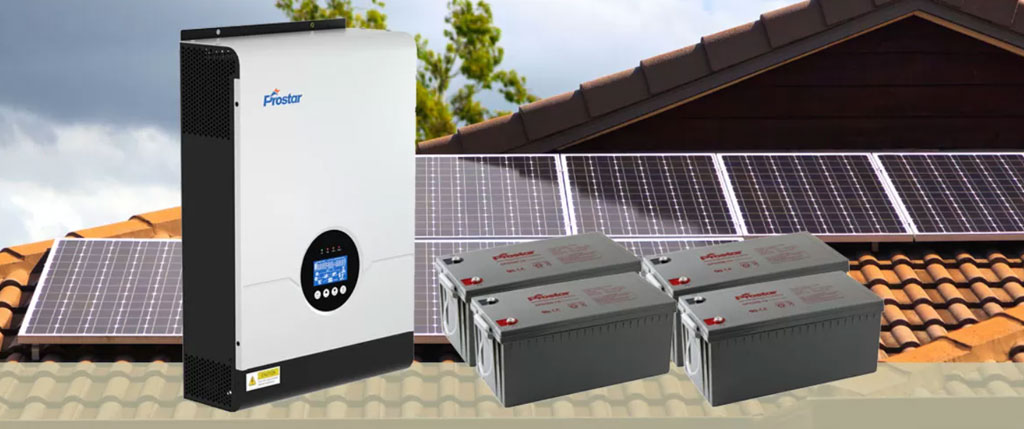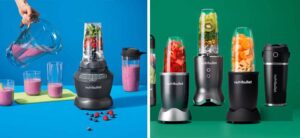The Kenyan energy landscape has shifted. The days of relying solely on the grid for stable, affordable power are long gone. With KPLC tokens becoming increasingly expensive and blackouts a painful reality, investing in Solar Inverter and Battery Systems for Kenyan Homes is no longer a luxury—it’s a necessity.
This comprehensive guide is designed to help the Kenyan homeowner navigate the complex world of solar power. We will show you exactly how to choose the right components, what real-world costs to expect in 2025, and how to maximize your savings to achieve true energy independence.

Why Solar Power is Non-Negotiable in Kenya
The decision to go solar is typically driven by two financial and operational concerns unique to the Kenyan market: cost and reliability.
The KPLC Token Problem: Volatility and Rising Costs
You are not imagining it: your tokens buy less and less power every quarter. The price of electricity is not just the per-unit charge; it includes a variety of fluctuating levies (Fuel Cost Charge, FERFA, etc.). This volatility makes budgeting nearly impossible.
Investing in solar is the most effective How to save KPLC tokens with solar in Kenya strategy available. By generating your own power during the day, you significantly reduce the number of high-tier units you purchase from KPLC, shifting your consumption into the solar-powered night hours. Recent data shows that the cost of KPLC tokens has increased dramatically, making the Solar system payback period in Kenya calculator results more attractive than ever.
The Reliability Factor: The Need for the Best Home Power Backup System
For many, solar is fundamentally about having a reliable backup. Load shedding and unplanned outages can cripple a home business, damage appliances, and interrupt security systems.
A properly sized battery and inverter system ensures that your essential loads—lights, routers, and refrigerator—never go down. This is the definition of the Best home power backup system Kenya can offer, far superior to a generator that requires fuel and constant maintenance.
Is it Possible? The Cost of Running a House on Solar Only in Kenya
Yes, it is entirely possible to run your house fully on solar, but it requires a significant initial investment (typically 5kVA or higher). The choice depends on your budget and tolerance for compromise.
- 100% Off-Grid: Requires a large battery bank (10kWh+) and sufficient panels to cover all cooking, heating, and appliance use.
- Hybrid (Recommended): The system primarily runs on solar, with the battery covering the night. The grid serves as a reliable emergency backup and allows for smart savings through KPLC’s net metering program.
Understanding the Core Components (Inverters, Batteries, and Controllers)
Your solar system is only as good as its weakest link. Understanding the three main components is key to a long-lasting, reliable setup.
The Inverter: The Heart of Your System
The inverter converts the direct current (DC) power generated by the panels and stored in the batteries into the alternating current (AC) power used by your home appliances.
Quality & Local Inverter Brands:
Ensure you buy an inverter that provides Pure Sine Wave inverter price Kenya. Modified Sine Wave inverters can damage sensitive electronics.
- Hybrid Inverter: The gold standard for Kenya. It intelligently manages three power sources: Solar, Battery, and KPLC Grid. It is also the key component in the debate of Hybrid vs Off-Grid inverter Kenya.
- Look for reliable local options like Deye 5kVA inverter price in Kenya or strong value brands where a Must Solar inverter review Kenya shows good results for basic needs.
The Battery: Your Energy Bank
The battery is the most expensive single component and determines your autonomy.
Lithium vs. Deep Cycle:
The choice between battery technologies is the biggest investment decision.
- Lithium Iron Phosphate (LiFePO4): Highest initial cost but best long-term ROI. They have a 10-15 year lifespan, making the Solar battery lifetime and replacement cost Kenya lower per year. Focus on the true cost of a Cost of 100Ah lithium battery in Kenya over its long life.
- Deep Cycle Gel/AGM: Lower initial cost, but shorter life (3-7 years). Good for small, budget-constrained systems.
Ensure you research Best deep cycle battery brands for solar Kenya (Eastman, Ritar) if going the budget route.
The Charge Controller (The Brains)
The charge controller optimizes the power flow from the solar panels to the batteries. The only acceptable choice for a modern system is an MPPT controller. The difference between MPPT vs PWM charge controller price Kenya is small compared to the efficiency gain, so always choose MPPT.
Sizing Your System: Solar Inverter and Battery Systems for Kenyan Homes
You must size your system based on your maximum instantaneous power need (VA/kVA) and your daily energy consumption (kWh).
Calculating Your Load (Crucial First Step)
- List Appliances: Identify every appliance you wish to power.
- Find Watts (W): Read the wattage rating on each appliance.
- Determine kVA: Sum the wattage of all appliances you plan to run simultaneously. The inverter must be rated higher than this total sum.
System Packages by Home Size:
| System Tier | Inverter Size | Target Home/Use | Power Capacity | Typical Cost Range (Excluding Install) |
| Tier 1 (The Backup) | 1kVA / 1.5kVA | Single Room House or Small Apartment | Lights, TV, Router, Fridge (selective use) | Ksh 100,000 – Ksh 180,000 (Full Kit) |
| Tier 2 (Mid-Range) | 3kVA | 3 Bedroom House (Mid-Size) | Lights, Entertainment, Fridge, Cooker (small induction), Water Pump (small) | Ksh 280,000 – Ksh 450,000 |
| Tier 3 (Full Independence) | 5kVA – 8kVA | Large Family Home / Home Office | Everything except large instant heaters/AC | Ksh 550,000 – Ksh 900,000+ |
The 3kVA solar system price Kenya for 3 bedroom house is the most common starting point for a mid-sized home, offering the best balance of cost and performance.
Focusing on the Large System: The 5kVA Option
The Price of 5kVA solar inverter system in Kenya 2025 is the benchmark for full independence. A 5kVA Full Kit Solar Back Up System (inverter, batteries, and 8-10 panels) generally costs between Ksh 550,000 and Ksh 650,000 for a high-quality Lithium-based setup. This system provides enough power to run multiple heavy appliances without interruption.
Complete Solar System Cost Breakdown (2025 Prices)
While the initial cost is high, the return on investment (ROI) is now shorter than ever before.
The ‘Full Kit’ Cost Analysis (3kVA Hybrid Example)
This estimation helps detail the Solar system full kit price Kenya (Ksh 100,000) challenge—it’s possible, but only for the smallest backup systems. A reliable 3kVA system costs significantly more:
| Component | Quantity | Estimated Price (KES) | Notes |
| Inverter (Hybrid MPPT) | 1 | Ksh 45,000 – Ksh 70,000 | Must/Felicity 3kVA |
| Solar Panels (Mono) | 8 x 450W | Ksh 100,000 – Ksh 130,000 | High-efficiency panels (Jinko/JASolar) |
| Battery (Lithium 5kWh) | 1 | Ksh 100,000 – Ksh 130,000 | Felicity/BYD 48V 100Ah |
| Total System Cost | Ksh 345,000 – Ksh 495,000 | (Estimated All-in Price) |
Deep Dive: Top 5 Inverter & Battery Brand Combinations in Kenya
The choice of components must be strategic. The market offers a wide spectrum, from highly affordable backup solutions to premium, scalable systems.
1. The High-Performance Workhorse: Deye Hybrid Inverter + Pylontech/BSLBatt Lithium
This combination is the most recommended mid-to-high-tier setup for urban Kenyan homes aiming for maximized self-consumption.
- Inverter Model Focus: Deye 5kVA Inverter (SUN-5K-SG03LP1-EU). Features Dual MPPTs and built-in WIFI monitoring.
- Battery Pairing: BSLBatt or Pylontech US5000 (5.12 kWh LiFePO4). These communicate seamlessly with the Deye inverter for precise charge management.
- Best For: Homes where maximizing efficiency and achieving the shortest Solar system payback period in Kenya calculator results are the goal.
2. The Reliable Budget-Friendly System: Must Solar Inverter + Ritar/Eastman Deep Cycle Gel
This combination targets the consumer whose primary concern is reliable backup against frequent blackouts and needs the most affordable 3kVA solar system price Kenya for 3 bedroom house.
- Inverter Model Focus: MUST PV1800 PRO Series (3kVA or 5kVA). A robust, all-in-one unit with an integrated MPPT controller.
- Battery Pairing: Eastman or Ritar 200Ah 12V Deep Cycle Gel Batteries (4x for 48V system). This is the definition of Best deep cycle battery brands for solar Kenya for its price point.
- Best For: Homes requiring simple, dependable backup for lights, security, and minor appliances.
3. The All-in-One Value: Felicity Inverter + Felicity Lithium Powerwall
Felicity has captured a large segment of the Kenyan market by offering excellent price points and pre-configured compatibility. This is the simplest “plug-and-play” solution.
- Inverter Model Focus: Felicity 5kVA Low Frequency Hybrid Inverter.
- Battery Pairing: Felicity 5kWh or 10kWh Lithium Battery Pack (LPBF Series). Designed for easy stacking and expansion.
- Best For: Homeowners prioritizing seamless integration and competitive pricing for a Lithium vs Deep Cycle solar battery price Kenya comparison. This system is popular for covering the Cost of running a house on solar only in Kenya during the day.
4. The Premium Flagship: Victron Energy MultiPlus + BYD Batteries
Victron is the global benchmark for reliability, especially in critical or complex off-grid installations.
- Inverter Model Focus: Victron MultiPlus II or Quattro Series. Known for superior monitoring (remote diagnostics) and modularity.
- Battery Pairing: BYD Battery-Box (LVS/LVL Series). Fully certified to communicate with Victron’s sophisticated system.
- Best For: High-end homes, mission-critical operations, and remote sites where reliability and longevity outweigh all other factors.
5. The Scalable Smart System: Huawei SUN2000 Inverter + LUNA2000 Battery
Huawei offers highly efficient, intelligent solutions that are gaining traction with Top solar installation companies in Nairobi.
- Inverter Model Focus: Huawei SUN2000 Hybrid Inverter. Known for extremely high efficiency (up to 98.4%) and advanced AI-powered energy management.
- Battery Pairing: Huawei LUNA2000 Power Module. Modular (5kWh blocks) and boasts unique cell-level optimization.
- Best For: Tech-savvy homeowners who value integration, digital monitoring, and a sleek, compact system that is designed for easy scaling up.
Installation, Warranties, and KPLC Regulations
A great system installed poorly is a disaster. Always prioritize certified installers.
Choosing a Certified Installer
Only work with a company whose technicians are accredited by the Energy and Petroleum Regulatory Authority (EPRA). Look for Top solar installation companies in Nairobi and across Kenya that:
- Provide a detailed load audit before quoting.
- Offer a minimum 5-year warranty on the inverter and a 10-year warranty on Lithium batteries.
KPLC Net Metering Explained (The Game Changer)
The new net metering regulation is a major boost for solar ROI.
Under Net Metering, your system can send excess power generated during the day back to the KPLC grid. KPLC tracks this surplus, and you receive credits on your future bill, offsetting the power you draw from KPLC at night.
Final Recommendations for the Kenyan Homeowner
- For Urban Homes (3-4 bedroom, standard use): Aim for a 3kVA Hybrid Inverter and a 5kWh Lithium battery. This offers the optimal balance between cost and performance, addressing all blackouts while drastically reducing your monthly KPLC bill.
- For Rural/Off-Grid Homes: Invest heavily in panel capacity and deep-cycle batteries (either large Gel/AGM banks or higher capacity Lithium). Over-sizing your battery capacity is critical for long cloudy spells.
Embrace solar now to take control of your power and your budget. The initial investment is quickly repaid in stability, comfort, and the ability to say goodbye to frustrating KPLC token anxiety.

